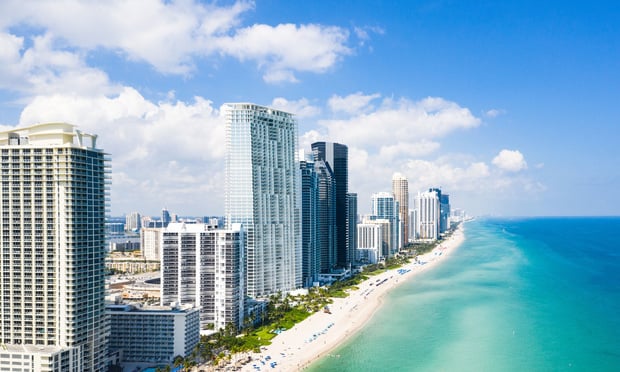Despite uncertainty brought on by the COVID-19 pandemic, Florida's real estate industry may be primed to recover with a sharp rebound.
According to a JLL report, prior epidemics that affected Florida's real estate market recovered quickly, with the market spiking about 30% in the year following the 2002 SARS pandemic, which caused 286 global deaths. A less sharp recovery followed the 1918 Spanish flu, which caused 675,000 deaths in the US, with the industry rebounding about 10% the following year. The pandemics triggered a "V-shaped recovery" in Florida's real estate market.
In the last two decades, Florida's downturns in the rental market have seen 7% average rent declines. The Florida market took almost 6 years to return to pre-recession levels. Hardest hit by the financial crisis were Orlando and South Florida, with Orlando a 13.4% decline, and South Florida with a 14.9% decline.
The state's ability to bounce back from economic impact due to the COVID-19 epidemic may hinge on that 25% of Florida office leases were in industries less affected by co-working spaces. Co-working space companies have seen their stocks plummet—IWG stock dropped 66% and WeWork's 7Y unsecured notes were trading at 63 cents on the dollar. The JLL report points out that the Florida economy was in a strong position before stay-at-home orders began, with unemployment at 2.8%.
However, individual landlords and tenants are navigating lease renegotiations under financial strain put forth by mandated closures. Tenants, particularly small business owners, face financial pressures of keeping businesses afloat while negotiating rent relief from landlords. Tenants have put leases on hold, often seeking legal advice on their obligation to pay contractual rents, or seeking rent relief from landlords.
Landlords have largely kept buildings open, which provides leverage when tenants seek rent relief. Generally, a landlord may ask a tenant to exhaust all federal aid options, such as the CARES Act, before resorting to rent relief. In cases where landlords agree to rent relief, the terms tend to be 30- to 120-day forbearances, with rent money amortized over the remainder of the lease once payments resume.
Want to continue reading?
Become a Free ALM Digital Reader.
Once you are an ALM Digital Member, you’ll receive:
- Breaking commercial real estate news and analysis, on-site and via our newsletters and custom alerts
- Educational webcasts, white papers, and ebooks from industry thought leaders
- Critical coverage of the property casualty insurance and financial advisory markets on our other ALM sites, PropertyCasualty360 and ThinkAdvisor
Already have an account? Sign In Now
*May exclude premium content© 2025 ALM Global, LLC, All Rights Reserved. Request academic re-use from www.copyright.com. All other uses, submit a request to [email protected]. For more information visit Asset & Logo Licensing.








